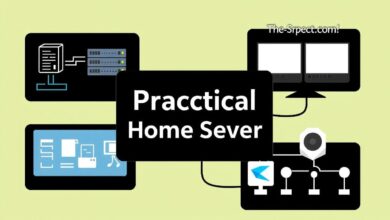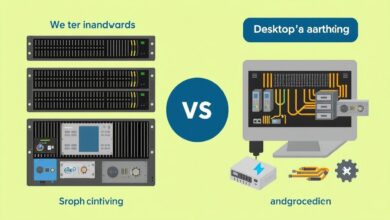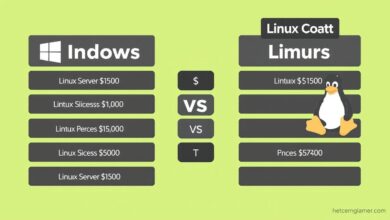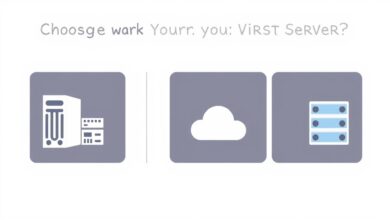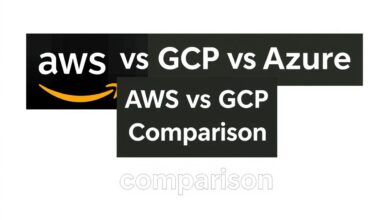How Much Does Running a Server Cost? A Beginner’s Budget Guide

Thinking about launching a website, hosting an application, or setting up a home media center? One of the first questions you’ll likely ask is: how much does running a server cost? Unfortunately, there’s no single answer. The cost can range from a few dollars a month to thousands upfront, plus ongoing expenses. This beginner’s budget guide will break down the key factors influencing server costs to help you make an informed decision.
Understanding the server running cost is crucial before you commit. It involves much more than just the initial hardware purchase or the first monthly subscription fee. You need to consider setup, electricity, internet bandwidth, maintenance, and potential upgrades. The biggest initial decision you’ll face is whether to rent server resources or buy your own hardware.
Renting vs. Buying: The Core Decision
Your server journey typically starts with choosing between renting compute power from a provider (like cloud hosting or dedicated server rental) or purchasing and managing your own physical server (on-premises).
Option 1: Renting Server Resources (Cloud & Dedicated Rentals)
Renting is often the go-to for beginners and many businesses due to its lower barrier to entry and predictable monthly costs. Here’s a breakdown:
- Cloud Servers (VPS): Virtual Private Servers (VPS) offer portions of a server’s resources. They are highly scalable and cost-effective for smaller needs. Costs can start incredibly low, often around $5 per month for basic configurations, scaling up based on CPU, RAM, and storage requirements.
- Dedicated Server Rental: For more demanding applications requiring full server resources without sharing, dedicated rentals are an option. This typically costs small businesses between $100 and $200 per month, though high-performance servers can cost significantly more. You get full control over the hardware without owning it.
- General Web Hosting: While not always a ‘server’ in the traditional sense, shared or managed hosting provides server resources for websites. Costs can range broadly from $10 to over $200 per month depending on the plan and provider features.
Pros of Renting: Lower upfront costs, predictable monthly expenses, scalability (easy to upgrade/downgrade), provider handles hardware maintenance.
Cons of Renting: Can be more expensive long-term, less control over the underlying hardware (especially with cloud/VPS), potential data privacy concerns depending on the provider.
[Hint: Insert image/video comparing cloud hosting dashboards here]Option 2: Buying and Running Your Own Server (On-Premises)
Buying hardware gives you complete control but comes with significant upfront investment and ongoing responsibilities. This is often chosen by those with specific security needs, technical expertise, or very high resource demands where long-term ownership is cheaper.
Upfront Costs: Hardware & Setup
- Hardware Purchase: This is the biggest initial expense.
- Basic/Home Server: You might repurpose an old PC or buy entry-level hardware for as low as $100 plus storage costs.
- Business/Enterprise-Grade: A reliable new server often costs between $1,000 and $2,500 per unit. Depending on specs (CPU, RAM, storage, redundancy), costs can easily range from $1,000 up to $10,000, or even $5,000 to over $20,000 for high-end systems. Even a server-grade processor alone can cost $100 to $1,000+.
- Initial Setup: If you’re not technically proficient, professional setup and configuration can add roughly $660 or more to your initial costs. This includes OS installation, network configuration, and security hardening.
Ongoing Costs: Power, Internet & Maintenance
Owning hardware means you pay for its upkeep. The ongoing server running cost includes:
- Electricity: Servers run 24/7 and consume significant power. Estimates suggest around $30-$35 per month for typical home server equipment. Annually, the average server in the U.S. costs about $731.94 just to power. This varies greatly based on hardware efficiency and local electricity rates. You can find more about energy consumption from sources like the ENERGY STAR program for data centers.
- Internet Connection: You need a reliable internet connection with sufficient bandwidth, especially upload speed. Costs vary widely by location and plan (e.g., $11/month for 1Gb fiber was cited in one source, but many pay $50-$100+ per month).
- Maintenance & Repairs: Hardware fails. You’ll need to budget for potential replacement parts (hard drives, RAM, power supplies) and your time (or hired help) for troubleshooting and maintenance.
- Software Licensing: Operating systems (like Windows Server) and other software may have licensing fees.
Pros of Buying: Complete control over hardware and software, potentially lower total cost of ownership over many years for high-resource needs, enhanced data privacy/security.
Cons of Buying: High upfront cost, responsibility for all maintenance and repairs, ongoing electricity and internet costs, requires physical space and cooling, less flexible scaling.
For more detailed comparisons you might want to read about Cloud vs On-Premises Infrastructure.
Factors Influencing Your Server Running Cost
Regardless of renting or buying, several factors impact the final price:
- Specifications: More CPU cores, RAM, and faster/larger storage (especially SSDs) increase costs.
- Usage & Traffic: Higher traffic or more demanding applications require more resources.
- Managed Services & Support: Opting for managed hosting or support contracts adds to rental costs.
- Location: Data center location (for rentals) and local electricity rates (for owned) affect pricing.
- Redundancy: Building failover/backup systems increases hardware or rental costs.
Which Option is Right for a Beginner?
For most beginners:
- Small Website/Blog: Start with shared hosting or a basic Cloud/VPS plan ($5-$20/month).
- Home Media Server/Testing Lab: Consider building a low-cost server from used parts or a Raspberry Pi ($100-$300 upfront + electricity) or using a budget VPS.
- Small Business Application: A mid-range Cloud/VPS ($20-$100/month) or a dedicated server rental ($100-$200/month) is often suitable.
Buying hardware makes more sense if you have the technical skills, specific long-term needs, and the budget for the upfront investment and ongoing operational costs.
Conclusion: Budgeting for Your Server
Calculating the exact server running cost requires evaluating your specific needs. Renting offers predictable, low-entry costs ideal for many beginners and businesses prioritizing flexibility. Buying provides ultimate control but demands significant upfront capital and ongoing management expenses. By understanding the different cost components—hardware or rental fees, setup, electricity, internet, and maintenance—you can create a realistic budget and choose the server solution that best fits your project and financial situation.
